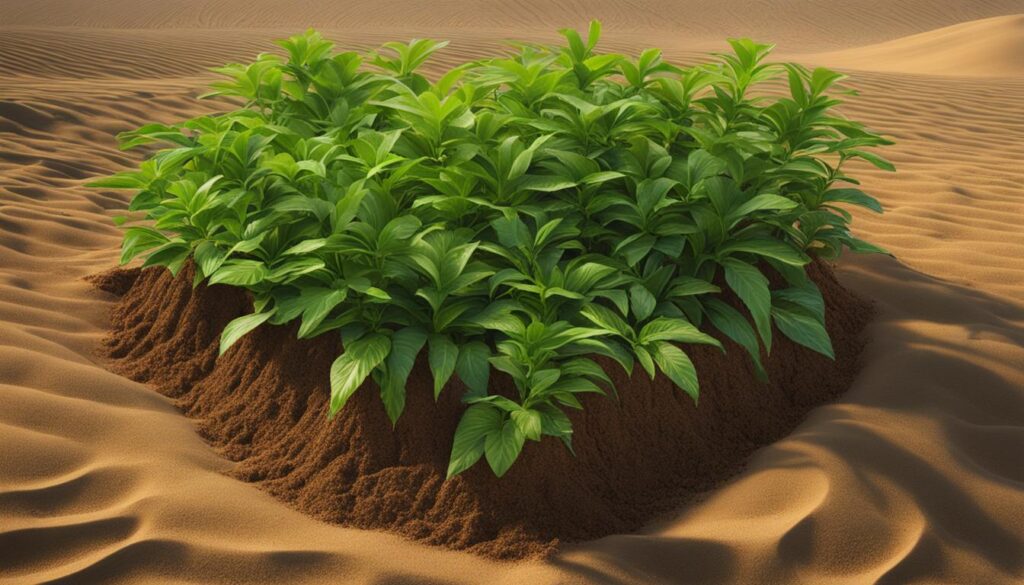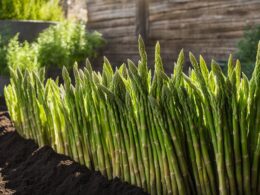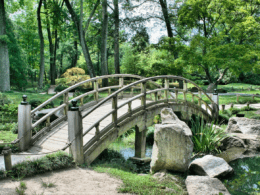When it comes to growing plants, the type of soil or sand you use can have a significant impact on their growth. Soil is rich in nutrients that are necessary for plant growth, while sand does not contain any nutrients and can be challenging for plants to grow in. Most plants will grow better in soil than in sand because of the nutrient content. However, there are exceptions, such as succulents and cacti, which prefer sandier conditions. It is essential to choose the right substrate based on the type of plant you are growing.
Post Summary:- Soil provides essential nutrients for plant growth, while sand does not.
- Most plants thrive in soil due to its nutrient content.
- Succulents and cacti prefer sandier conditions for optimal growth.
- Choosing the right substrate is crucial for successful plant cultivation.
- Understanding the pros and cons of soil and sand can help in making an informed decision.
Understanding Soil and Sand Types
When it comes to understanding the suitability of soil and sand for plant growth, it is essential to first grasp the different types of soil and sand. Soil is a natural body composed of mineral particles derived from the weathering of rocks. It consists of three primary types: clay, silt, and sand.
Clay soil is known for its small particles that easily bind together, resulting in a dense and heavy texture. On the other hand, silt soil has slightly larger particles and a crumbly texture that allows for better water drainage. Sand soil, with its larger particles, feels gritty to the touch and provides excellent drainage.
Understanding the distinctions between these soil types is valuable when determining which substrate is optimal for your plants. While clay soil retains moisture well, it can become compacted and hinder root growth. Silt soil strikes a balance between water retention and drainage, making it suitable for a wide range of plant species. Meanwhile, sand soil drains quickly and is ideal for plants that prefer drier conditions.

Soil and Sand Type Comparison
| Soil Type | Characteristics | Advantages | Disadvantages |
|---|---|---|---|
| Clay | Small particles that bind together | Retains moisture well | Can become compacted, hindering root growth |
| Silt | Slightly larger particles, crumbly texture | Offers good water drainage | May retain less moisture compared to clay soil |
| Sand | Larger particles, gritty texture | Provides excellent drainage | Does not retain moisture as well as clay or silt soil |
By understanding the unique characteristics of each soil and sand type, you can make informed decisions when selecting a substrate that will support optimal plant growth. Consider the specific needs of your plants and choose the type of soil or sand that will provide the best conditions for their development.
Pros and Cons of Soil and Sand for Plant Growth
When it comes to choosing the right substrate for your plants, it’s essential to consider the pros and cons of both soil and sand. Each has its advantages and disadvantages that can affect plant growth. Let’s take a closer look at the benefits and drawbacks of using soil and sand as plant-growing mediums.
Pros of Using Soil:
- Rich in Nutrients: Soil is naturally rich in nutrients that plants need for healthy growth. It provides a wide range of essential minerals and organic matter that can support robust root development and overall plant health.
- Good Drainage: Soil has the ability to retain water while also allowing excess moisture to drain away. This balance is crucial for plants as it prevents waterlogging and root rot.
- Supports Root Growth: The texture and structure of soil create a favorable environment for root penetration and anchorage. This allows plants to establish strong root systems, resulting in better nutrient uptake and overall stability.
Cons of Using Soil:
- Waterlogging: If not properly drained, soil can become waterlogged, depriving plant roots of oxygen and causing them to rot. This can be a significant issue, especially in heavy or compacted soils.
- Heavy and Difficult to Work With: Soil can be heavy and challenging to handle, especially when it needs to be amended or when planting in containers. It may require more effort to prepare and cultivate compared to other growing mediums.
Pros of Using Sand:
- Excellent Drainage: Sand is known for its excellent drainage properties. It allows water to pass through quickly, preventing the risk of waterlogged roots and ensuring good aeration.
- Quick Warm-up in Spring: Sand warms up more quickly than soil in the spring, which can be beneficial for some plants that require earlier planting or germination.
- Relatively Inexpensive: Sand is widely available and relatively inexpensive compared to other soil amendments or growing mediums.
Cons of Using Sand:
- Lack of Nutrients: One of the significant drawbacks of using sand for plant growth is its lack of nutrients. Unlike soil, sand does not provide the necessary minerals and organic matter needed for robust plant growth. Regular fertilization is essential when using sand as a growing medium.
- Compaction: Sand can become compacted over time, making it difficult for plant roots to penetrate and access water and nutrients. This can hinder plant growth and result in weaker root systems.
In conclusion, both soil and sand have their advantages and disadvantages when it comes to plant growth. While soil provides essential nutrients and supports root development, sand offers excellent drainage and quick warming properties. It’s essential to consider the specific needs of your plants and choose the most suitable substrate accordingly. Whether you opt for soil or sand, proper amendments and maintenance, such as adding organic matter or fertilization, can help enhance plant growth and ensure the best possible growing conditions.
| Pros | Cons |
|---|---|
| Rich in Nutrients | Waterlogging |
| Good Drainage | Heavy and Difficult to Work With |
| Supports Root Growth | Lack of Nutrients |
| Excellent Drainage | Compaction |
| Quick Warm-up in Spring | |
| Relatively Inexpensive |

Enhancing Soil and Sand for Plant Growth
When it comes to growing healthy plants, it’s important to provide them with the best possible growing environment. Whether you are working with soil or sand, there are several ways you can enhance these substrates to promote optimal plant growth. By amending the soil or sand with organic matter, fertilizer, mulch, and cover crops, you can create a nutrient-rich and well-draining medium that will support the development of strong and thriving plants.
Amending with Organic Matter
One of the most effective ways to improve the quality of both soil and sand is by adding organic matter. This can include compost, aged manure, or decomposed plant material. Organic matter not only enriches the soil with essential nutrients but also improves its structure by enhancing its water-holding capacity, aeration, and drainage. It also acts as food for beneficial microorganisms that break down organic matter, releasing nutrients for plant uptake. When amending with organic matter, ensure it is well-rotted and evenly distributed throughout the soil or sand for maximum effectiveness.
Fertilizing for Nutrient Boost
In addition to organic matter, fertilizers can provide an additional nutrient boost to support optimal plant growth. Choose a fertilizer that is appropriate for the specific needs of your plants, considering factors such as their nutrient requirements and the soil or sand conditions. Slow-release fertilizers are often a good choice as they provide a steady supply of nutrients over an extended period. Follow the manufacturer’s instructions for application rates and methods, and be mindful not to over-fertilize, which can damage plants and negatively impact the environment.
Mulching and Cover Crops
Mulching is another valuable technique for enhancing soil and sand. Applying a layer of mulch on the soil surface helps retain moisture, regulate soil temperature, suppress weeds, and prevent erosion. Organic mulches, such as wood chips or straw, break down over time and contribute to the organic matter content of the substrate. Additionally, planting cover crops like legumes or nitrogen-fixing plants can increase soil fertility, suppress weeds, and protect sandy soils from erosion. These plants have deep root systems that help break up compacted soil, improve aeration, and add nitrogen to the soil as they decompose.
| Enhancement Method | Benefits |
|---|---|
| Amending with Organic Matter |
|
| Fertilizing for Nutrient Boost |
|
| Mulching and Cover Crops |
|
Is Distilled Water More Beneficial for Plants Than Tap Water?
Is distilled water more beneficial for plants than tap water? The debate over distilled water vs tap water for plants continues. While tap water contains minerals beneficial for plant growth, the chemicals, like chlorine and fluoride, may be harmful. Distilled water lacks these impurities but also lacks essential nutrients. A balanced approach is ideal, using a mixture of both types of water for optimal plant health.
Conclusion
In conclusion, when it comes to plant growth, soil is generally a better substrate than sand. Soil contains essential nutrients that support healthy plant development, while sand lacks these nutrients. Most plants thrive in soil due to its nutrient content and its ability to retain water, which is crucial for sustaining plant growth.
However, it is important to note that there are exceptions to this general rule. Succulents and cacti, for example, prefer sandier conditions because they have adapted to survive in arid environments. These plants are adapted to withstand drought and have specialized mechanisms to store water, making sand a suitable substrate for their growth.
Understanding the pros and cons of both soil and sand is key to making the right choice for your plants. Soil provides nutrients, good drainage, and root support, while sand offers excellent drainage and quick warming properties. By amending soil or sand with organic matter, fertilizer, mulch, and cover crops, you can enhance the growing environment and promote healthy plant growth.
So, whether you’re growing flowers, vegetables, or other types of plants, consider the specific needs of each plant and choose the substrate that will provide the best conditions for their growth. By selecting the appropriate substrate and providing the necessary amendments, you can create an optimal environment for your plants to flourish.
FAQ
Do plants grow better in soil or sand?
Most plants will grow better in soil due to its nutrient content and better water retention. However, there are exceptions, such as succulents and cacti, which prefer sandier conditions.
What are the different types of soil and sand?
Soil is composed of three main types: clay, silt, and sand. Clay soil has small particles that bind together easily, while silt soil has slightly larger particles and a crumbly texture. Sand soil has the largest particles and feels gritty to the touch. Sand is a type of sedimentary rock composed of large grains of quartz or other minerals.
What are the pros and cons of soil and sand for plant growth?
Soil is rich in nutrients, provides good drainage, and supports healthy root development. However, it can become waterlogged and heavy to work with. Sand, on the other hand, does not contain any nutrients but has excellent drainage. It warms up quickly in the spring and is relatively inexpensive. However, it can become compacted, making it difficult for plant roots to access water and nutrients.
How can soil and sand be enhanced for plant growth?
Adding organic matter, such as compost or aged manure, can increase nutrients and improve soil structure. Mixing in fertilizer can provide essential nutrients. Adding a top layer of mulch can help retain moisture and regulate soil temperature. Planting cover crops can increase nutrients and provide a protective layer for sandy soil.









